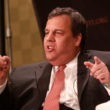A week in June that was supposed to be a great one for President George W. Bush was eclipsed by the week-long, non-stop televised mourning for President Ronald W. Reagan.
In the air on Air Force One, Bush first greeted the Pope—and while in Rome asked top Vatican officials to press American Catholic bishops to speak out in support of the Republicans’ anti-gay-marriage campaign. Next he met European leaders in Normandy for a D-Day commemoration. Then he convened a closed conference of the international leaders in the Group of 8 at a security-locked resort at Sea Island, Georgia.
But news coverage of almost all of that was swamped by the mourning in America for Reagan. The TV coverage of the D-Day anniversary gave more attention to Reagan’s long-ago presidential visit there, and to televised reruns of his moving speech then, than to President Bush’s monotone spiel.
And there was a predictable rush of Republican proposals in Congress to put Reagan’s image on the F.D.R. dime and on the $10 bill, replacing Alexander Hamilton, and to rename the Pentagon for Reagan. And, of course, to place his image on Mt. Rushmore—perhaps renaming it Mt. Ronmore.
Before Reagan died, as the commentator Mark Shields put it on PBS’s NewsHour With Jim Lehrer, “Bush was on his comeback.” There was some speculation that the impact of Reagan’s death might boost Bush’s re-election chances. But Shields said that on Election Day in November he didn’t think voters would say: “I was undecided until today, but I’m going to win one for the Gipper. . . . I don’t think that’s going to happen.”
Shields also got off one of the few broadcast or printed critiques of the Reagan years, calling Reaganomics “a disaster,” with its “tax cuts for the well-off and budget cuts for the not well-off.” Other than rebroadcasts of Reagan’s famous “tear down this wall” speech in Berlin and his reputed success in accelerating the collapse of the Soviet Union, there has been such minimal recall of the amiable Reagan regime’s negative impact that we were glad to finally see some hard-nosed appraisal of it in the web magazine Salon (www.salon.com).
With Salon‘s permission an example of that follows. It is a piece by Joe Conason, slightly edited for space. Conason writes a twice-weekly column for Salon and a weekly column for the New York Observer. His book Big Lies: The Right-Wing Propaganda Machine and How It Distorts the Truth was recently published.
By Joe Conason
In death, as in life, Ronald Reagan maintains an extraordinary, almost elemental capacity to attract the positive and repel the negative. His energy, his grit, his poise and his powers of public persuasion were the pride of his supporters and the envy of his opponents.
Yet it should be possible to eulogize rather than mythologize the 40th president and his times—to acknowledge the skill, charm and commitment, without indulging in a sentimental revisionism that erases the historical reality of the 1980s.
On the passing of a former president, celebration and commemoration overwhelm clarity and accuracy; and that is especially true in this instance. The American press was rarely critical of Reagan, and the partisan mythmaking process began more than a decade ago.
Ideas matter, as the conservatives like to say, and so do the stubborn facts. As Republicans seize this singular opportunity to advance their agenda behind the Reagan cortege, it’s imperative to recall what actually happened during his eight years in the White House—and to underline the consequences of the ideas that he promoted.
At his 1981 inauguration, the new president voiced his simple revolutionary credo: “Government is not the solution to our problem. Government is the problem.”
That remark was prescient, although not in the sense that Reagan intended. His naive faith in the private sector’s capacity to regulate itself, along with his disdain for many of the necessary functions of the modern state, allowed cronies and crooks to flourish.
Inept government, corrupt government and cynical government became severe problems during his tenure, leaving fiscal wreckage that remained for many years after he returned to private life.
THE RONNIE RECORD—The millions of words of hagiographic copy uttered and written at this time will make scant mention of the scandal epidemic that marred Reagan’s presidencyaside from the Iran-contra affair, which few commentators understand well enough to explain accurately. Disabled by historical amnesia, most Americans won’t recall—or be reminded of—the scores of administration officials indicted, convicted or expelled on ethics charges between 1981 and 1989.
However historians will assess Reagan’s responsibility, the record is what it is. Gathering dust in the news archives are thousands of clippings about the gross influence-peddling, bribery, fraud, illegal lobbying and sundry abuses that engulfed the Environmental Protection Agency (EPA), the Department of Housing and Urban Development (HUD), the Nuclear Regulatory Commission, the Justice Department, and the Pentagon, to name a few of the most notorious cases.
In his 1991 book Sleepwalking Through History: America in the Reagan Years, journalist Haynes Johnson came up with an unflattering statistic: “By the end of his term, 138 Reagan administration officials had been convicted, had been indicted, or had been the subject of official investigations for official misconduct and/or criminal violations.”
These cases affected the nation’s health, security and financial soundness. Consider the example of the EPA, where Reagan’s contempt for environmental regulation led to the appointment of dishonest, incompetent people who coddled polluters instead of curbing them. Dozens of them were forced to resign in disgrace, after criminal and congressional investigations, and several went to prison.
Or consider the HUD scandal, in which politically connected Republicans criminally exploited the same housing assistance programs they routinely denounced as “wasteful.” Billions in EPA Superfund and HUD dollars were indeed wasted because of their corruption.
Reagan’s HUD Secretary, Sam Pierce, took the Fifth Amendment when called to testify about the looting of his agency—the first Cabinet official to seek that constitutional protection since the Teapot Dome scandal. But he wasn’t the only Cabinet official to fall in scandal. So did Attorney General Edwin Meese, in the Wedtech contracting scandal, and so did Defense Secretary Caspar Weinberger in the Iran-contra affair—although he was pardoned at the 11th hour by President George H.W. Bush.
The Pentagon procurement scandals, which involved literally dozens of rather unpatriotic schemes to rip off the military, revealed the system of bid-rigging and gift-greasing that accompanied Reagan’s defense build-up. Worse, the president had been warned, two years before the scandal broke, about the growing allegations of fraud within the Defense Department by a blue-ribbon commission he had appointed. When it did break with a series of FBI raids in 1988, he was about to leave the White House.
THE WACKY JACKPOT—Most emblematic of the Reaganite attitude toward government was the savings-and-loan scandal. The president’s advisers had convinced him that if he would only deregulate the thrift industry, a gigantic bonanza of growth and investment was sure to follow. His sunny quip when he signed the deregulation bill in 1982 was typical Reagan: “All in all, I think we’ve hit the jackpot.”
There’s no reason to doubt that he sincerely believed that, with government shoved aside, everyone would prosper. The best reckoning of the costs of his benign intentions is a trillion dollars.
Even Reagan’s harshest critics didn’t claim that he condoned the abuses that were tolerated—and in some cases perpetrated—by his appointees. Nor did he profit personally from those abuses. He was a “big picture” president who was detached from the details of government, delegating authority to aides he trusted too much. Historians will determine Reagan’s personal responsibility for the disasters as well as the triumphs on his watch.
So let the former president be remembered for his optimism, his achievements, and his love of country. But let his mistakes be remembered as well. Reagan deserves no less. The sentimental version doesn’t do justice to him and his legacy, for better and worse.
THERE’S MORE—The Nation magazine (June 28) stepped in, too, with a piece on “Reaganomics” by its national affairs correspondent, William Greider. It said historians “will someday rank him right up there with Warren Harding.”
By William Greider
Reagan was a fabulist. He told stories—often charming, sometimes loony—in which sentimental images triumphed over facts, warmth over light.
So it is entirely appropriate today that the major media, draped in mourning, are solemnly fictionalizing his presidency. Reagan spun them around brilliantly, used the White House reporters and cameras as hapless props in his melodrama, ignored the tough questions and stuck unyieldingly to his scripted version of reality. That was partly conviction, partly the discipline of an “old pro” movie actor. It appears to have worked with the press. Their memorials to the “Ronald Reagan story” sound more like his fables than the events I witnessed.
What’s left out? For one thing, a chilling meanness lurked at the core of Reagan’s political agenda (always effectively concealed by the affability), and he used this meanness like a razor blade to advance his main purpose—delegitimizing the federal government.
Race was one cutting edge; poverty was another. His famous metaphor—the “welfare queen” who rode around in her Cadillac collecting food stamps—was perfectly pitched to the smoldering social resentments but also a clever fit with his broader economic objectives. Stop wasting our money on those lazy, shiftless (and always unspoken, black) people. Get the government off our backs, encourage the strong, forget the weak.
In case any white guys missed the point, Reagan opened his 1980 campaign in Neshoba County, Mississippi, where three civil right workers had been murdered in the 1960s. His speech extolled states’ rights. The tone was sunny optimism.
In the end, the only folks who got truly liberated by Reaganomics were the same people who had financed his rise in politics, the Daddy Warbucks moguls from California and corporate behemoths like General Electric.
Reagan’s theory was really “trickle down” economics borrowed from the Republican 1920s (Harding-Coolidge-Hoover) and renamed “supply side.” Cut taxes for the wealthy; everyone else will benefit. As Reagan’s budget director David Stockman confided to me at the time, the supply-side rhetoric “was always a Trojan horse to bring down the top rate.” Many middle-class and poor citizens figured it out, even if reporters did not.
BACK TO THE ’20s—Reagan’s great accomplishment was ideological—propelling the ascendancy of the right—but the actual governing results always looked more like hoary old interest-group politics. Wealthy individuals and corporate and financial interest got extraordinary benefits (tax reductions and regulation) while the bottom half got whacked whenever the opportunity arose.
His original proposition—cut taxes regressively, double military spending, shrink government and balance the federal budget—looked cockeyed from the start. Yet when the logic self-destructed in practice, conservatives were remarkably content.
After my notorious account of Reagan’s economic failure, based on my conversations with Stockman, was published in the December 1981 Atlantic Monthly, the Gipper likened me to John Hinckley, the would-be assassin who shot him. So much for Mr. Nice Guy.
Both parties would spend the next 20 years cleaning up after the Gipper’s big mistake. They collaborated in an ongoing politics of bait and switch—raising taxes massively on working people through the Social Security payroll tax while continuing to cut taxes for the more affluent and to whittle down government aid for anyone else.
Reagan’s stubborn optimism did refresh the national spirit, no question, and it certainly powered his political success. He gave us a television-era remake of Warren Harding’s “return to normalcy.” But in hindsight, I have come to think that the illusions fostered by his sunny messages perhaps did the gravest economic damage. Things were not normal; they were deteriorating and leading toward a chasm of growing inequities.
The rending of the American middle class, the stagnation of industrial wages, the relentless loss of U.S. manufacturing—these great wounds to general prosperity were all visible during the Reagan era, but instead of addressing them honestly, his politics further aggravated the consequences.
The Gipper insisted, no doubt sincerely, that it was “morning again in America.” People wanted to believe this, and politicians of both parties learned from his cue—wave the flag and avoid bad news. Ronald Reagan launched the great era of false triumphalism that continues to this day among American leaders. The current generation lacks his charm and is therefore less successful at hiding the truth.






0 Comments